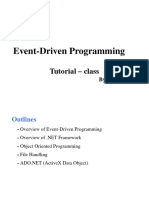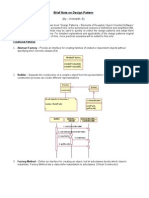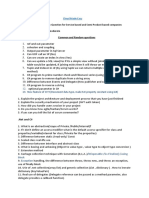0% found this document useful (0 votes)
10 views1 pageDotNet Interview Notes With Diagrams UTF8
The document outlines key concepts for .NET developer interview preparation, including Object-Oriented Programming principles such as inheritance, polymorphism, encapsulation, and abstraction. It also covers essential data structures in C#, various design patterns like Singleton and Factory, and architectural patterns including MVC, Layered, Clean Architecture, and Microservices. These notes serve as a comprehensive guide for candidates to review important topics relevant to .NET development.
Uploaded by
Govind PokuriCopyright
© © All Rights Reserved
We take content rights seriously. If you suspect this is your content, claim it here.
Available Formats
Download as PDF, TXT or read online on Scribd
0% found this document useful (0 votes)
10 views1 pageDotNet Interview Notes With Diagrams UTF8
The document outlines key concepts for .NET developer interview preparation, including Object-Oriented Programming principles such as inheritance, polymorphism, encapsulation, and abstraction. It also covers essential data structures in C#, various design patterns like Singleton and Factory, and architectural patterns including MVC, Layered, Clean Architecture, and Microservices. These notes serve as a comprehensive guide for candidates to review important topics relevant to .NET development.
Uploaded by
Govind PokuriCopyright
© © All Rights Reserved
We take content rights seriously. If you suspect this is your content, claim it here.
Available Formats
Download as PDF, TXT or read online on Scribd
/ 1

























































